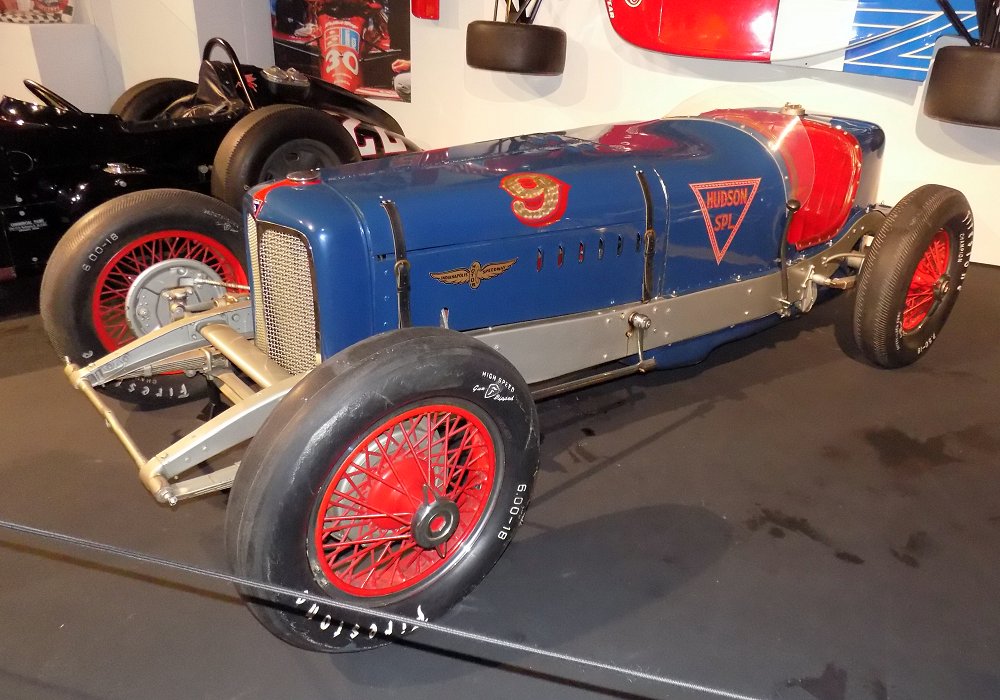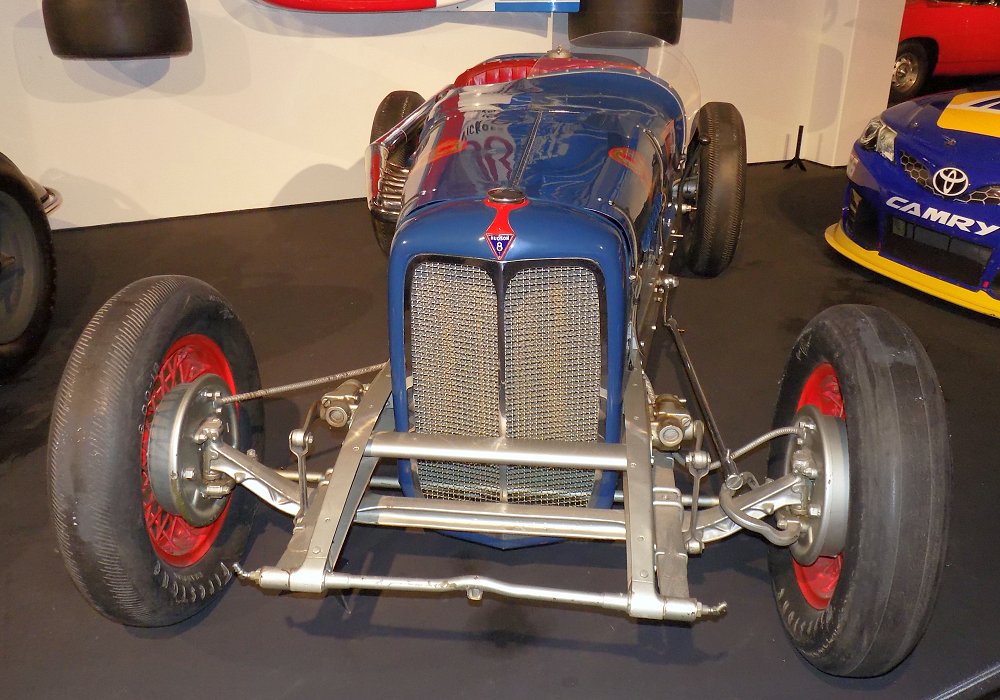Description
The Hudson Eight Indianapolis was a remarkable and often overlooked chapter in the history of the Hudson Motor Car Company—an ambitious step into the world of American motorsport that demonstrated the performance potential hidden beneath the marque’s reputation for refinement and value. At a time when most manufacturers were struggling simply to survive the Great Depression, Hudson dared to take its smooth, straight-eight powerplant and prove it on the most demanding circuit of all: the Indianapolis Motor Speedway. Though it never became a dominant force at the Brickyard, the Hudson Eight Indianapolis program revealed the company’s engineering depth and its willingness to compete with far larger rivals in the pursuit of speed and prestige.
The story began in the early 1930s, when Hudson’s new straight-eight engine had already earned a reputation for smoothness and torque. The idea of adapting this dependable, refined power unit for racing seemed improbable at first—Hudson was known for well-built sedans, not single-seaters—but the Depression-era market had shifted dramatically. Manufacturers needed spectacle and publicity to maintain public interest, and success at Indianapolis offered a kind of credibility no advertisement could buy. Thus, Hudson engineers, working with independent racing specialists, began preparing a small series of cars based on their production Eight engine and chassis components, suitably modified for the rigours of 500 miles at racing speed.
The Hudson Eight engine at the heart of these specials was a side-valve straight-eight of around 254 cubic inches, noted for its durability and torque rather than outright power. To make it competitive, engineers strengthened the crankshaft, improved lubrication, and increased compression, while substituting lighter pistons and stronger connecting rods. With these modifications and a carefully tuned downdraft carburettor, the racing version was capable of producing between 150 and 175 horsepower—roughly double that of the production unit. Cooling was improved with a larger radiator and revised water passages, while exhaust manifolds were reworked to allow freer breathing at sustained high speeds. Though it lacked the exotic overhead camshafts of its European rivals, the Hudson Eight’s sheer mechanical integrity made it ideal for endurance racing.
The chassis used for the Hudson Eight Indianapolis cars were purpose-built, incorporating elements of the company’s production frame but modified for lower weight and better rigidity. They featured dropped front axles, lightweight aluminium bodywork, and centre-lock wire wheels shod with narrow racing tyres. The steering was quick and direct, while mechanical drum brakes—large by the standards of the day—were carefully balanced to ensure stability under deceleration. Suspension followed contemporary practice, with semi-elliptic leaf springs and friction dampers, giving a firm but predictable ride. The driver sat low within the narrow body, surrounded by minimal instrumentation: tachometer, oil pressure, and temperature gauges, with a hand throttle for fine control on the straights.
Visually, the Hudson Eight Indianapolis racers were elegant machines, combining the long proportions of the Hudson engine with the aerodynamic thinking of the early 1930s. The polished aluminium body tapered to a sharp tail, the long bonnet covering the inline-eight in a tight-fitting cowl with louvred sides for heat dissipation. A simple chromed grille and faired headrest gave the car a purposeful appearance, while the paintwork—often in Hudson’s official racing colours of deep blue and silver—reflected both craftsmanship and pride. These were not mere factory experiments; they were professional racing machines, built to prove Hudson’s mettle on the grandest stage in American motorsport.
When the Hudson Eight first appeared at Indianapolis, it surprised many observers with its poise and speed. The engine’s smooth torque delivery gave it excellent tractability out of the turns, and the car’s balance inspired confidence in its drivers. Although it could not quite match the outright pace of the purpose-built Millers and later Offenhauser-powered entries, it held its own with commendable reliability. In endurance tests, the Hudson straight-eight often ran for hours at near full throttle without complaint—a testament to its robust construction. Period reports noted that the Hudson cars completed their qualifying and race runs with a composure that belied their modest origins.
Hudson’s participation in Indianapolis was as much about technology transfer as it was about competition. Lessons learned from the racing program found their way into the company’s road cars. Improved crankshaft balancing, better lubrication systems, and refinements in engine cooling all stemmed from the demands of endurance racing. The publicity value was significant, too: Hudson was no longer seen solely as a builder of practical sedans. The brand had demonstrated that its engines could withstand the fiercest punishment, lending an aura of performance to its otherwise conservative image.
The Hudson Eight Indianapolis project also reflected a broader moment in American racing history. The early 1930s were a period of experimentation, when factory involvement was tentative and independent teams often carried the torch for innovation. Hudson’s effort sat somewhere in between—a blend of corporate initiative and private enthusiasm. It represented a time when racing was still closely connected to production technology, when a skilled engineer could take a showroom engine, modify it in a workshop, and test its limits on the track. In this sense, Hudson’s Indianapolis adventure was entirely in keeping with the pioneering spirit of the era.
Though Hudson never achieved a major victory at Indianapolis, the experience deepened its understanding of performance engineering. The endurance and precision developed through these efforts would later resurface in Hudson’s postwar dominance of stock-car racing, particularly with the Step-Down Hornet of the early 1950s. In a sense, the Hudson Eight Indianapolis cars were the ancestors of those NASCAR legends—the first expression of Hudson’s belief that strong, balanced engineering could triumph over sheer size or luxury.
Today, the few surviving Hudson Eight Indianapolis cars are among the rarest and most intriguing American racing machines of their generation. They represent not just a manufacturer’s foray into competition, but also the courage to innovate in uncertain times. Restored examples are seldom seen outside major museums or historic racing events, where their long, graceful lines and unmistakable straight-eight exhaust note evoke an era when courage and ingenuity defined the sport.
The Hudson Eight Indianapolis remains a symbol of quiet determination and mechanical purity. It showed that even a company better known for comfort and practicality could, when inspired, build machines capable of speed and endurance at the very edge of possibility. In doing so, it gave Hudson a place in the rich tapestry of American motorsport—an achievement earned not through wealth or spectacle, but through the simple power of intelligent engineering and ambition.


